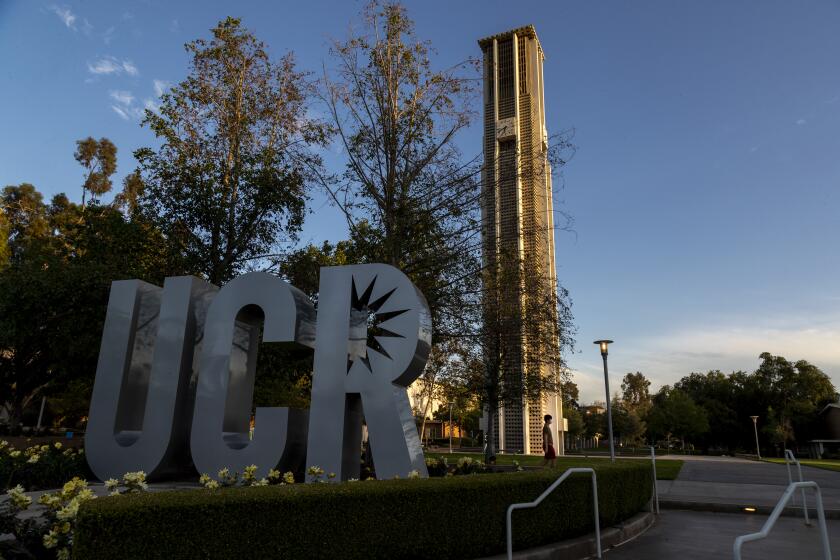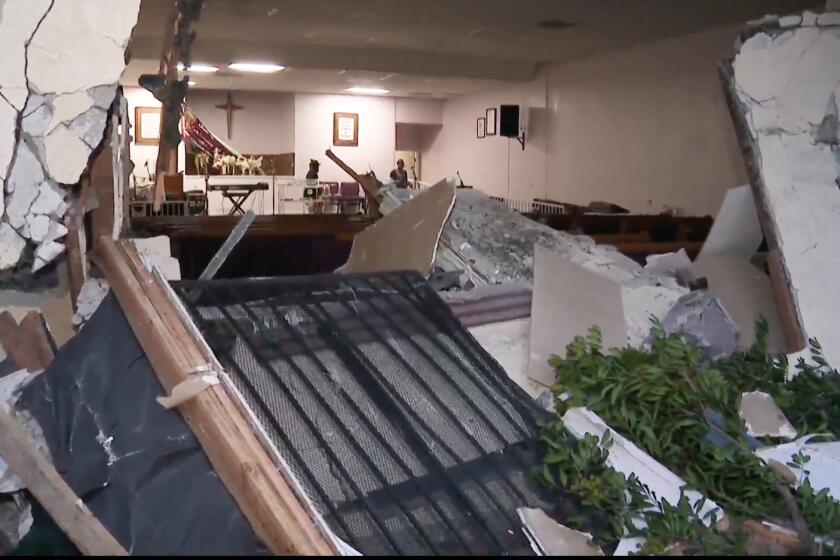Break up the CRA to Best Rebuild L.A. : Redevelopment: What’s needed is a South-Central version of the agency, run by local leaders and responsive to grass-roots needs.
Of the dozens of government agencies engaged in rebuilding Los Angeles, one would seem ideally positioned to provide help. The city’s Community Redevelopment Agency has power, lots of money--an annual budget of some $350 million--and even a legal charge to help revitalize poor neighborhoods.
Yet, like other redevelopment agencies in California, the CRA lacks one essential ingredient: credibility. A 30-year history of abuse--real and perceived--has left the agency without enough community support, especially in South-Central Los Angeles, to play an important role in rebuilding the city. To be effective, the CRA must be broken into three or four smaller entities, including, most critically, a separate redevelopment agency for South-Central. And the South-Central Redevelopment Agency must be given enough power and money by the rest of the city--and the state--to make a difference in the rebuilding effort.
Redevelopment is California’s successor to urban renewal. Its intent is to identify “blighted,” largely ignored inner-city areas and provide financial incentives to entice developers and other private investors to revitalize them. Growing property-tax funds reaped from the redevelopment flow to the agency for reinvestment; they need not be shared with county government, school districts and other agencies. Also, eminent domain is available to assemble large blocks of land. In other words, redevelopment is designed precisely for the kind of reconstruction and reinvestment effort that South-Central needs today.
Unfortunately, redevelopment in Los Angeles--and, indeed, throughout California--carries a lot of baggage with it. In the 1960s and early ‘70s, it was used to bulldoze poor neighborhoods such as downtown’s Bunker Hill, displacing thousands of poor people and turning the property over to office and hotel developers. In the Pico-Union neighborhood, one of L.A.’s poorest, activists still recall the way redevelopment was used to tear down the homes of poorer people so that Pep Boys’ corporate offices could expand.
More recently, redevelopment throughout California has been transformed from a tool of social change into a financial weapon used by local governments to generate and keep tax revenues within their borders. Recognizing redevelopment’s power as an “economic development” program, cities have used and abused its powers to create high-visibility, tax-rich business parks such as Cerritos Auto Square and Irwindale’s Miller Brewery. Indeed, the most visible redevelopment-created business park of all is downtown Los Angeles, where the construction and sales of high-rise office buildings has made the CRA rich.
To its credit, the L.A. CRA has made a major effort in the last few years to spread the wealth from downtown to selected projects elsewhere. For example, it has generously financed low-income housing throughout the city and, in so doing, has helped foster the creation of neighborhood-based, non-profit development corporations in many poor neighborhoods. Especially since the civil unrest last spring, the CRA has adopted the rhetoric of empowerment now so fashionable in Los Angeles. “We are one of an array of resources at the community’s disposal,” one mid-level CRA bureaucrat told me recently--a statement unimaginable only a few years ago.
Yet these efforts have not restored the CRA’s credibility as a community-friendly agency. In 1990, when the agency proposed expanding the Watts redevelopment area, it got skewered by the residents and backed off the expansion. Similarly, last summer, the CRA tried to get a bill through the Legislature permitting it to create new redevelopment areas in South-Central on a fast-track basis. But the bill’s sponsor, Assemblyman Curtis Tucker Jr. (D-Inglewood) got fried at a district meeting on the issue and pulled the bill.
Most of the political and community leadership in South-Central--City Council members, churches and so forth--have expressed support for expanded CRA efforts. But a significant portion of the community, especially longtime black homeowners, still fear the CRA, believing it to be the tool of powerful business interests out to destroy their neighborhoods. It’s not hard to see why. All you have to do is look at what the CRA did in its 100-acre Watts redevelopment project: It converted burned-out 103rd Street from commercial to stack-’em-high apartments. Such high-density housing may, in fact, be an appropriate response to increasing population and diversity in Watts, but it doesn’t do much for the agency’s political popularity.
More recently, proposals have been floated at City Hall to make the CRA part of a city super-agency dealing with economic development citywide. But this is the wrong way to go. The CRA’s problem is not that it doesn’t have comprehensive economic-development powers. The problem is that it’s too broad-based--too centralized downtown, too focused on traditional--that is, downtown or suburban--models of economic development. To regain credibility, the CRA must be an everyday presence in South-Central, working with residents and businesses on rebuilding the decimated commercial strips in a way that truly responds to grass-roots needs. Creation of a South-Central Redevelopment Agency, run by black and Latino community leaders from the area, is probably the single most useful step City Hall could take toward empowering South-Central’s community groups in rebuilding their part of the city.
Decentralizing redevelopment power won’t be enough, however. Money is also needed. On its own, South-Central is probably too poor to generate enough redevelopment property taxes to make a grass-roots redevelopment effort successful. But the CRA’s redevelopment zones downtown are brimming with far more property-tax revenues than anyone ever expected the agency to accumulate. With CRA’s downtown work essentially done, the agency could easily afford to set up a “Robin Hood” arrangement--essentially, creating a semi-permanent subsidy for South-Central from the flow of property taxes coming off the skyscrapers.
This kind of subsidy would require a special exemption from state law, since most redevelopment revenues must be spent within the redevelopment zone where they are generated. But such legislation would surely receive broader support than CRA’s fast-track bill from last summer. The state’s redevelopment Establishment might support the measure as a way of restoring its own credibility.
Redevelopment remains the most powerful single tool available to local governments interested in building and rebuilding needy communities, but public faith in its mission must be restored. In Los Angeles, that means it’s time to break up the CRA.
More to Read
Start your day right
Sign up for Essential California for news, features and recommendations from the L.A. Times and beyond in your inbox six days a week.
You may occasionally receive promotional content from the Los Angeles Times.





